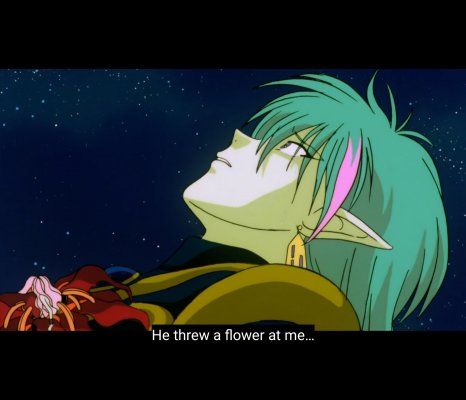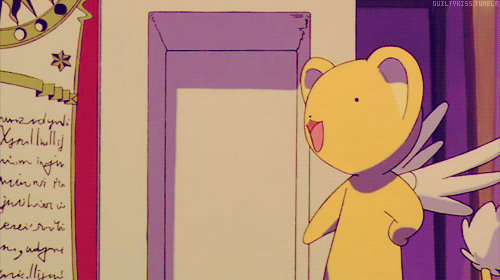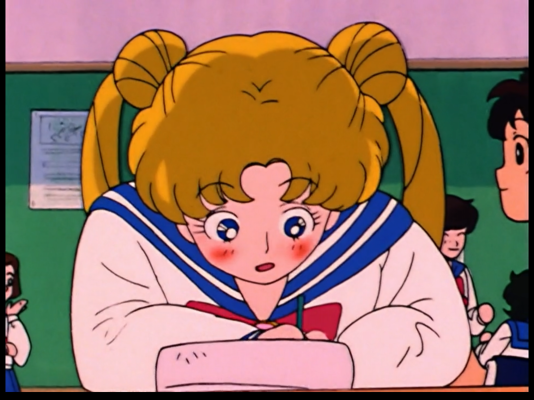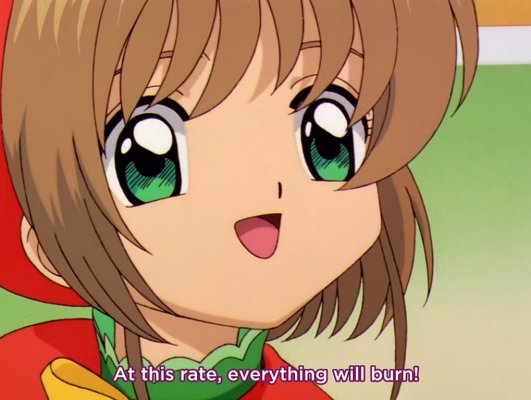Dai
Dragon Knight
There's a trope in shonen battle manga and tokusatsu where the enemy needs to be softened up and rendered immobile so the heroes can use a finishing move that leaves them vulnerable while it's charging up. In Sailor Moon, the other guardians soften up the enemy and Usagi is the stationary cannon who fires off the finishing move (just with a lot more crying). Sometimes it can be hard to see why the other girls would follow Usagi into hell, but that question always gets answered sooner or later.On that note, knowing that there were fighting games, I’d expected a little more actual fighting. It’s early days yet, but thus far it does seem like Usagi is very reliant on both Tuxedo Mask and her tiara to get herself out of trouble.
If anything, Usagi is more of a fighter in the early episodes of season 1 because she doesn't have a team yet. She even gets a short-lived version of the ubiquitous Rider Kick for a while.
Sailor Moon R: The Movie
This is it: the Sailor Moon formula in its complete form. We start with some rom-com antics, a monster shows up to threaten the town, super-powered action ensues, the stakes are raised to world-threatening levels, the sailor guardians embark on a dangerous mission to the enemy's lair, and when the situation is at its darkest we are reminded why Usagi is truly a warrior of love.
Cutie Honey declares herself a warrior of love in every episode of her show, but it's an affectation; she's a brutal avenger who is out to kill everyone who had a hand in the death of her father. Usagi, on the other hand, couldn't throw a punch to save her life, but she would die for the people she loves and they would do the same for her. This is what makes the climax of Sailor Moon stories so compelling when they reach the point where their special attacks aren't enough anymore.
Kunihiko Ikuhara's fingerprints are all over this movie, whether it's the quirky animation of Ami trying to keep herself from watching Usagi kissing, the homoerotic undertones of the villain, the flower symbolism, or the way he manages to draw out such emotional intensity in the story's climax. If you want to see more of the show done in his signature style, season 3 (Sailor Moon S) is where it's most prevalent, though there's also a lot in season 4 (SuperS).
The action benefits from the movie's increased animation budget. The TV show leans on stock animation for special attacks, with only season 4 bucking that trend. We see the standard special move animations in the initial fight, but everything gets amped up when they're fighting a whole swarm of enemies later on. The shots of beams sweeping across swathes of monsters are reminiscent of Gunbuster.
The music deserves a special mention. We get new arrangements of signature cues from season 2, each sailor guardian gets a new theme during her transformation, the incidental score does a great job of highlighting key moments, and the song Moon Revenge is a large part of why the climax works so well.
Sadly it's time to leave Usagi and co. behind tomorrow as we climb into our most excellent time-travelling phone booth and dial up 1998.







